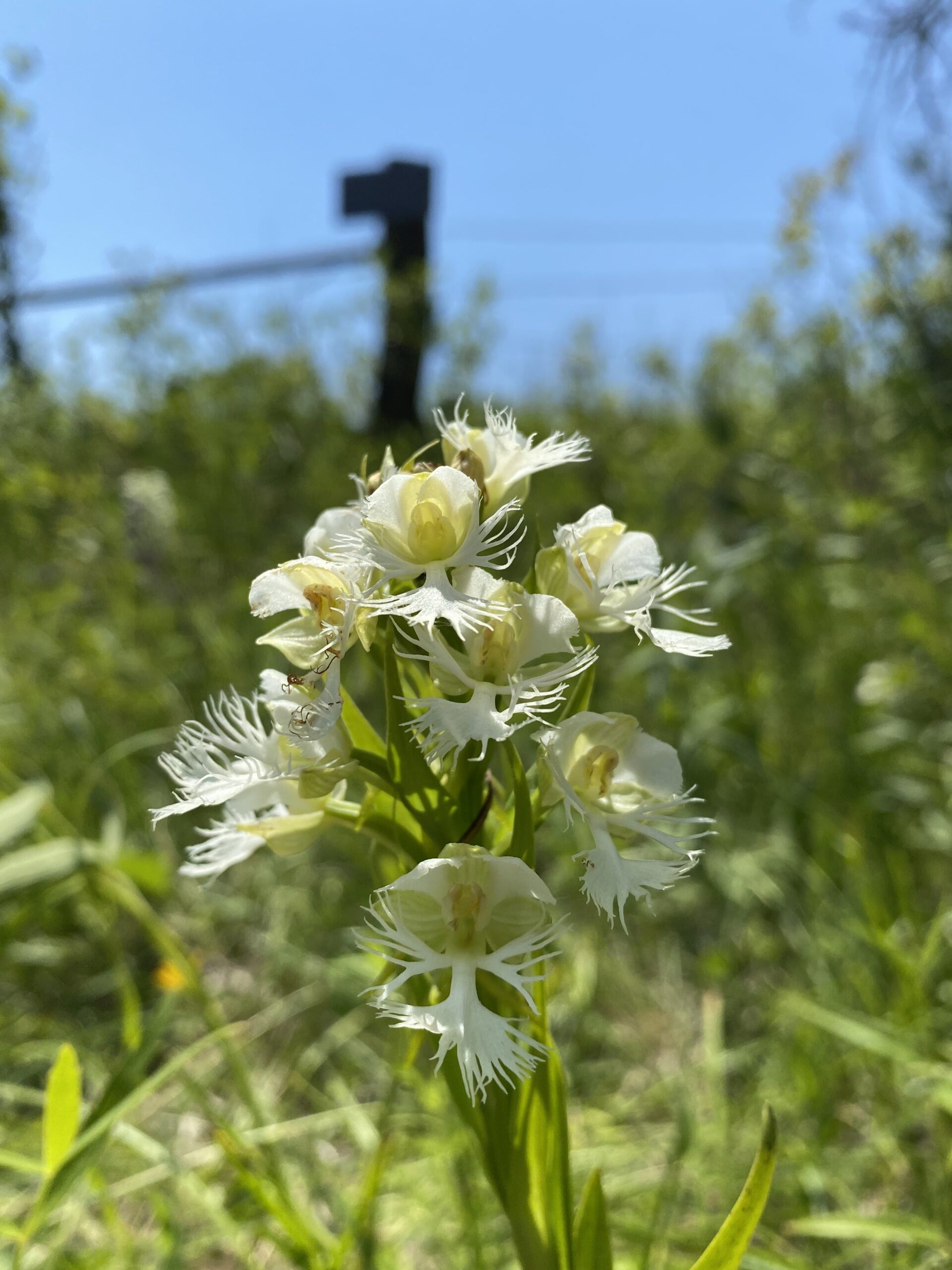Orchids are one of many largest and most various plant households. They’re additionally probably the most threatened. Many species face extinction as a result of habitat loss and overcollection.
The Missouri Botanical Backyard is uniquely positioned to advance a conservation program of orchids as a result of its current scientific and horticulture experience in orchid propagation, uncommon plant conservation, and habitat restoration. Orchids have been a part of the Backyard’s historical past since its opening and the Backyard even had a micropropagation lab within the early 1900s.
Leaning on this experience, Backyard workers are specializing in conservation of native orchid species which are dying out as a result of habitat loss, lack of genetic variety, lack of pollinators, and different points.

A Fading Magnificence
Whereas many individuals image orchids rising in tropical rainforests, they’ll develop in a various vary of habitats together with deserts, bogs, and prairies – even edging close to the arctic circle. Missouri has greater than 30 species of orchids, a lot of that are of conservation concern. The japanese prairie fringed orchid, Platanthera leucophaea, is a federally protected threatened species that’s declining as a result of habitat loss and degradation.
This species’ magnificence and speedy decline caught the eye of scientists who started a quest to put it aside from extinction. Scientists have studied the species within the lab and in its habitat for years, taking a look at the way it greatest germinates, how human affect (e.g., prescribed burn administration) have an effect on its inhabitants and flower manufacturing, and its intimate relationship with mycorrhizal fungi, which all orchids require to develop in nature.
Orchid seed amassing
By means of a grant from the U.S Fish and Wildlife Service, Backyard horticulturists set their sights on conservation efforts on this species in 2021. They took three journeys to northern Missouri to rely and map crops in wild populations and hand pollinate them to maximise their seed manufacturing. In addition they collected seeds to deliver again to the micropropagation lab and to retailer within the Backyard’s Seed Financial institution.

Again within the lab
Within the micropropagation lab, Rachel Helmich is constructing on strategies which have been profitable for rising different native orchids. These embrace symbiotic seed germination, which suggests rising a particular fungus together with the orchid seed, in addition to asymbiotic germination.

“Rising P. leucophaea with out reliance on its mycorrhizal fungus has been like creating probably the most particular and excellent dinner you’ve ever tasted,” Helmich defined. “The components should be wholesome, nutritious, and in simply the fitting quantities. One should assume like a dietician and first care doctor to the species by figuring out one of the best weight-reduction plan and life-style strategy to provide wholesome people – on this case: temperature biking, mild/darkish publicity, and timing between “meals” AKA shifting to new rising media, are all elements to contemplate.”
As she continues this work, Helmich talks recurrently with specialists which have had luck with the japanese prairie fringed orchid to share information on what works and what doesn’t. Once they efficiently develop seeds into crops, the tiny plantlets are transplanted into soil and moved to a greenhouse to be grown into bigger crops appropriate for planting open air.

Progress potential
These efficiently grown crops, together with seeds within the Seed Financial institution, can be utilized to reintroduce the plant in its native habitat and assist species survival within the wild.
“Between the intensive effort throughout a number of Backyard divisions, outdoors funding, the landowner and land managers of the unique assortment website, and the surface researchers who’re so beneficiant of their willingness to share their experiences with this species, an unbelievable effort goes in direction of guaranteeing this species survives and hopefully, sooner or later, thrives in Missouri,” Helmich mentioned.





Seeking to extra Missouri native orchids
A method the Backyard is working to make sure the persistence of orchids within the wild is thru a brand new mission aiming to revive populations of native orchid species at Shaw Nature Reserve. The multi-year mission is a partnership between the Backyard’s Horticulture division, its Heart for Conservation and Sustainable Improvement, or CCSD, and Shaw Nature Reserve.
“Native orchids have declined in current a long time, and this mission uniquely combines the Backyard’s experience in horticulture, analysis, and restoration to develop strategies that can assist the reestablishment of those iconic wildflowers of their native habitats,” mentioned CCSD Director Matthew Albrecht.
The primary yr of the mission focuses on 4 uncommon native orchid species:
- Oklahoma grass pink, Calopogon oklahomensis
- Putty-root orchid, Aplectrum hyemale
- Better yellow lady-slipper, Cypripedium parviflorum var. pubescens
- Twayblade, Liparis liliifolia
The crew chosen these species as a result of they have been of conservation concern and traditionally occurred within the japanese Ozark Border area the place Shaw Nature Reserve is situated.
Rescue plans
The mission, funded by the Albers-Kuhn Basis, started in 2022 with the crew amassing seed and fungal soil samples from the focused orchid species. In 2023, they began working to find out one of the best propagation approach for every species. With that data, they are going to develop genetically various samplings of every of the species within the inexperienced home. Lastly, they are going to set up populations of native orchids in habitat-appropriate areas at Shaw Nature Reserve.

“An distinctive number of pure habitats mixed with strategic restoration and land stewardship make Shaw Nature Reserve a really perfect location to reintroduce populations of uncommon species native to our area,” mentioned Shaw Nature Reserve Director Quinn Lengthy. “We’re enthusiastic about this native orchid mission and sit up for additional collaboration with colleagues from CCSD and the Horticulture division to preserve regional native biodiversity.”

